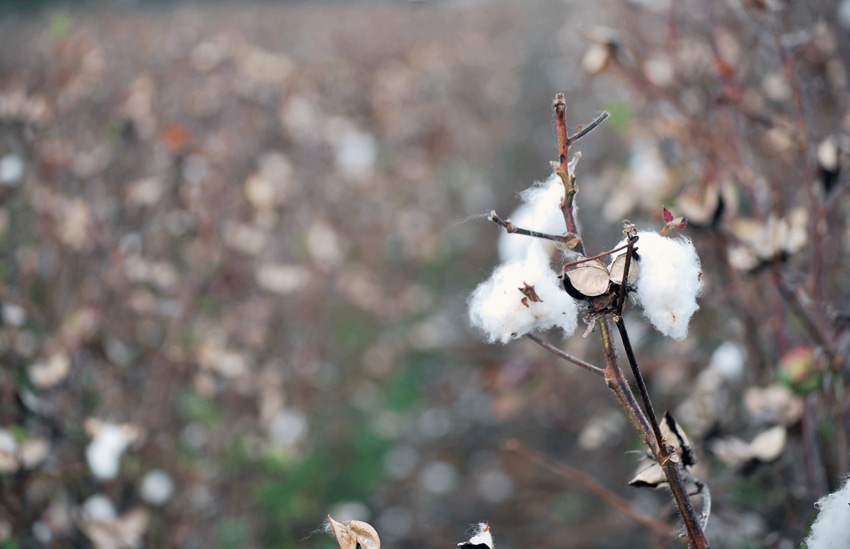
US farmers on path to worst fiscal troubles in two decades
“The results for our feed grain and oilseed farms, as well as wheat and cotton farms, are the worst (in terms of the highest percentage of farms in the poor category) since the late 1990s,” said Joe Outlaw, co-director of the Agriculture and Food Policy Center.

U.S. feed grain, oilseed, wheat and cotton farms face the bleakest outlook they’ve seen since the late 1990s in terms of financial condition and their long-term prospects for survivability.
Based on the records for 63 representative crop farms maintained by Texas A&M University’s Agricultural and Food Policy Center, many of the nation’s commercial crop farms face highly uncertain futures over the next four years.
“The results for our feed grain and oilseed farms, as well as wheat and cotton farms, are the worst (in terms of the highest percentage of farms in the poor category) since the late 1990s,” said Joe Outlaw, co-director of the Agriculture and Food Policy Center.
Specifically, he says:
11 of the 23 feed grain and oilseed farms are projected to end the baseline period at the end of 2016 and 2020 in poor financial condition.
6 of the 11 wheat farms are projected to end the period in poor financial condition.
8 of the 15 cotton farms are projected to end the period in poor financial condition.
4 of the 14 rice farms are expected to end the period in poor financial condition.
“These results already include any projected ARC and PLC support that would be triggered by low prices or low incomes in future years,” said Dr. Outlaw, who testified before a House Agriculture Subcommittee on General Farm Commodities and Risk Management hearing on April 14.
“Unfortunately, the results should be viewed as optimistic because of an assumption we make regarding cash balances. It is important to note the ARC support tends to be frontloaded and with prices remaining low throughout hehthe projection period, the ARC benchmark declines significantly resulting in producers receiving little support by the end of the period.”
“While we normally provide the results of policy analyses to your staff without commentary,” Outlaw told Rep. Rick Crawford, R-Ark., chairman of the Subcommittee on General Farm Commodities and Risk Management, “I was specifically asked to provide my perspective today.”
Currently, the Agricultural and Food Policy maintains information to describe and simulate around 100 representative crop and livestock operations in 29 states. “We have several panels that continue to have the original farmer members we started with back in 1983,” said Outlaw.
Staff members update the data through face-to-face meetings with the panels every two years. The Center partners with the Food and Agricultural Policy Research Institute at the University of Missouri which provides projected prices, policy variables and input inflation rates.
Besides face-to-face meetings with the producers, the Agricultural and Food Policy Centers also contacts them to obtain feedback on specific events or issues, according to Outlaw’s testimony.
“For this hearing, we specifically asked them about the financial situation in their area, how they are dealing with low prices and overall observations of the current financial environment,” he said. “Thus far, we have received comments from about one-third of our 300 panelists.”
Financing more difficult
The following are generalizations from Outlaw based on their comments:
Obtaining financing is much harder. “All of our farmers received financing, but they knew of farmers in their areas who didn’t, and many had to go from bank to bank to secure financing, endure tougher rules and put up more collateral. Most feel the worst is yet to come.
Almost all are delaying capital/machinery updates. “Many reported reducing the number of hired laborers and amount of purchased inputs.
Cash rents have fallen slightly but not to the extent commodity prices and returns have. “This is due, in part, because some producers have multi-year lease agreements. However, several cash lease tenants reported their landlords have been unwilling to lower cash lease rates. In the South and Southeast, some share-lease arrangements have been adjusted to give tenants a slightly larger share of the crop.”
Most are concerned about the future, both for themselves and for young farmers who tend not to have the equity in their operations older farmers have.
“The low prices being experienced by most of our covered commodities are well below the cost of production for almost all of our representative farms,” said Outlaw. “These farms have been shown to represent producers with below-average costs of production. So if our representative farms are projected to do poorly, then higher-cost farms are in trouble.”
Critics simply don't care
Outlaw said the current poor outlook for farms across the U.S. would be much worse if not for the safety net provided by both Title I commodity policies and federal crop insurance programs contained in the Agricultural Act of 2014.
“There are some in agriculture who say commodity policies are more important than crop insurance or vice versa,” he noted. “I believe they are equally important – especially during times of low prices.”
As an example, he said lenders tend to view crop insurance as being more important because the insurance guarantee is “bankable,” meaning it is something on which they can base a loan. On the other hand, producers see the commodity assistance as the only chance they have of coming close to breaking even in a low price environment.
“Finally, in my opinion, the interest groups that continue to call for changes that would negatively impact these two key policy tools clearly either have no idea how difficult the financial situation is across agriculture or they simply do not care.”
About the Author(s)
You May Also Like





